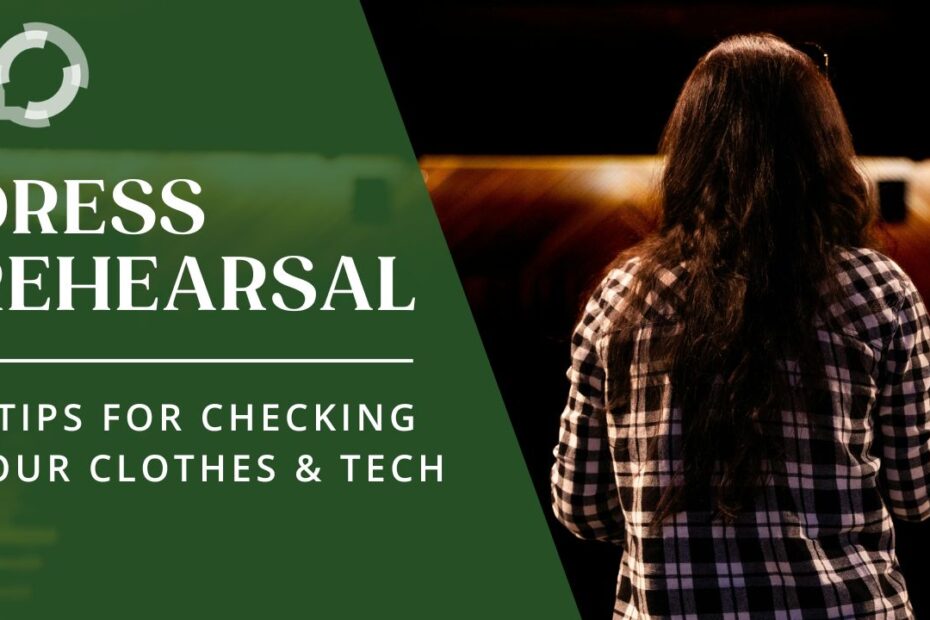“The apparel oft proclaims the man” (Hamlet Act I, scene iii).
This advice from father to son, given as the younger man is about to return to college abroad, is a timeless reminder that people assess others based on their appearance and that first impressions count for a great deal.
Our teenager’s high school recently had its ceremony to honor academic achievement for the year. The occasion is fairly formal for students, requiring them to dress up far more than most of them typically do for an average school day. The young men wore jackets and button down shirts, while the young women wore skirts, dresses, or dress pants. Although everyone was spruced up, the theater kids, artists, and musicians clearly absorbed Polonius’s advice.
These performers understand how their clothes contribute to the total effect they want to create. The singer wore a dress that contrasted with her skin and with the stage’s deep red curtains. One theater kid wore latticed tights and combat boots, while another wore a sharp bow tie. The artist whose senior project was celebrated for its blend of creativity and cultural references did the same with her clothes. In a sea of similarly-dressed peers, their choices stood out, even though most of them didn’t say a word.
If you’re someone who doesn’t give a lot of thought to how you dress before a speech, it’s worth your time to make more mindful choices.
How You Dress Conveys Meaning
Popular culture is brimming with great sources for perspectives on how a person’s image is constructed for the public. From reality shows like Project Runway, RuPaul’s Drag Race, and What Not to Wear, to fashion writers & critics Tom and Lorenzo, to films like 2023’s Barbie and every scene featuring a dramatic makeover (I see you, Grease and The Breakfast Club), commentary about clothing is everywhere.
My favorite examples come from television shows and movies about politics. Media and film teacher and creator, Simon Hunter, begins his video on understanding semiotics – systems of signs and their meaning – with a terrific clip from the 2011 movie The Adjustment Bureau. The lead character, played by Matt Damon, is a politician; in a speech, he comments on the importance of his tie color and the shininess of his shoes, revealing the extent to which his public persona is crafted for a specific effect.
The West Wing is a Rourke Training go-to for many reasons, including this. In season 3, episode 4, “On the Day Before,” Press Secretary CJ Cregg similarly chastises a reporter for commenting on why she switched from a glitzy dress to a suit before a difficult press conference. It’s an masterful display of clothing as message.
Beyond the world of entertainment, there is, of course, no shortage of advice for speakers about how to dress to impress in a professional context. Women, in particular, are urged to consider how much of their legs, shoulders, or cleavage to show. Many of these tips skew to a conservative approach to professional clothing, suggesting pops of color in accessories or other small touches to add individual flair
As you’re staring into your closet before your next speech or public event, keep in mind how Polonius ends his speech to Laertes, with the exhortation, “This above all: to thine own self be true.” If you’re someone who feels more confident in a suit, embrace that formality. If you’re a jeans and t-shirt person, translate that level of casualness into context-appropriate choices.
Fit Check Meets Tech Check
Performance is not just about what you wear, however. It’s about how your clothing interacts with the environment in which you’re performing. In other words, it’s all about context. In the same way that speaker choreography thinks through how movement affects your message, an outfit that’s great in your conference room might be the wrong choice on a convention stage.
That’s why the arts students had a sartorial edge at the awards ceremony this week. They’re used to a full dress rehearsal before the big show, to make sure all of the details come together. For me, this is about thinking through the logistics of your clothes, rather than putting forward a set of rules for what you “should” wear or avoid.
Here, then, are 8 tips inspired by these theater kids, artists, and musicians:
1. Movement: Can you move easily? Will you be able to reach or gesture without your clothes pulling out of shape or becoming untucked?
2. Color: What will be behind you? Make sure your choice contrasts, so you don’t end up as a floating head.
3. Sound check 1: Is anything about your outfit unexpectedly noisy – clinking jewelry, swishy layers of fabric, squeaking shoes on the stage’s varnish?
4. Sound check 2: If you’ll be wearing a lavalier mic, where will you clip it? Practice typical gestures to make sure you’re not going to brush against the mic with your hands or clothes.
5. Lighting: Does the fabric become sheer when lit? Does the lighting change the fabric color or cause it to cast an unflattering reflection on your skin?
6. Temperature: Stage lighting and presentation projection equipment can significantly raise the temperature where a speaker is standing. Is the fabric of your outfit appropriate for being warm? Can you easily shed a layer if you need to without losing your mic?
7. Sight lines: Where will you be in the audience’s sight lines? If you’ll be significantly higher or lower than the audience’s eye level, check your neckline and hemline to make sure you’re not inadvertently showing more than you intend. I once wore socks with a colorful profanity on them to a presentation, but made sure the words were hidden by the hem of my pants, even when I sat down.
8. Best foot forward: If you’ll be standing or walking around during the speech, make sure your shoes are both comfortable and secure. You want to be able to stand solidly and stride with confidence and grace.
How About You?
How much consideration do you give to the way that you dress for a speech or presentation? Do you have a particular set of clothes that work in multiple contexts or different outfits for different types of settings? How often do you have the opportunity to do a dress rehearsal in the space where you’ll be speaking?
Have you ever been the victim of, or witness to, a fashion disaster at a public event? Not something where you just don’t like the overall look, but a situation where the combination of clothes and context goes utterly wrong? Not everyone will have quite as public or as embarrassing a moment as the infamous photo of Lady Diana Spencer being backlit and turning her skirt sheer, but the importance of public speaking in professional careers provides many opportunities for the unfortunate to happen.
Tell us about it in the comments.
Check Out Our YouTube Channel
The Rourke Training – Ongoing Mastery YouTube channel has a bit of something for everyone. Go there to get Kirsten’s take on examples of public speaking, as well as reflections on her entrepreneurial journey. The channel is also the home of the podcast Kirsten and Kellie produced for 5 years, Ongoing Mastery: Presenting & Speaking, which covers everything connected to continually improving your craft of being a public speaker, from interviews and mini-coaching sessions with guests to conversations between Kirsten and Kellie.
Come join us.
Cheers,
Kellie


